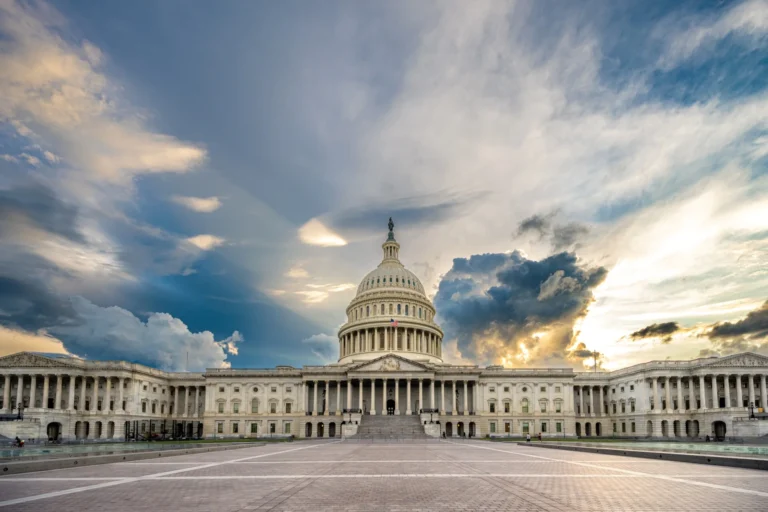The courts say the president can’t claim “the power of sovereigns like King George III” to destroy one of America’s basic freedoms.George W. Bush Is No King, Constitutional Law Expert Tells House PanelBy Cliff Montgomery – June 20th, 2007Louis Fisher, a specialist in constitutional law with the Library of Congress, appeared before the House Judiciary Committee on June 7, 2007, to discuss “Constitutional Limitations on Domestic Surveillance,” particularly “the issues raised by the ‘Terrorist Surveillance Program’ (TSP), authorized by the [Bush] administration after 9/11 and conducted by the National Security Agency (NSA).”We quote from this expert’s fascinating analysis below:“I begin by summarizing what happened in the 1960s and 1970s with domestic surveillance. Two basic points. First: intelligence agencies were willing to violate the Constitution, including the First and Fourth Amendments. Second: federal courts rejected the theory that the President has ‘inherent’ constitutional authority to engage in warrantless domestic surveillance.”Illegal eavesdropping by the executive branch surfaced as a prominent issue in the 1960s and 1970s, after it was publicly disclosed that U.S. intelligence agencies had been monitoring the domestic activities of Americans.”In 1967, when the U.S. Army wanted the NSA to eavesdrop on American citizens and domestic groups, the agency agreed to carry out the assignment.”NSA began to put together a list of names of opponents of the Vietnam War. Adding names to a domestic “watch list” led to the creation of MINARET: a tracking system that allowed the agency to follow individuals and organizations involved in the anti-war movement. NSA thus began using its surveillance powers to violate the First and Fourth Amendments.”From mid-1969 to early 1970, the White House directed the FBI to install without warrants 17 wiretaps to eavesdrop on government officials and reporters. Newspaper stories in 1974 revealed that CIA had been extensively involved in illegal domestic surveillance, infiltrating dissident groups in the country and collecting close to 10,000 files on American citizens. CIA Director William Colby later acknowledged the existence of this program while testifying before a Senate committee.”On June 5, 1970, President Richard M. Nixon met with the heads of several intelligence agencies, including the NSA, to initiate a program designed to monitor what the administration considered to be radical individuals and groups in the United States.”Joining others at the meeting was Tom Charles Huston, a young aide working in the White House. He drafted a 43-page, top secret memorandum that became known as the Huston Plan.”Huston put the matter bluntly to President Nixon: ‘Use of this technique is clearly illegal; it amounts to burglary.'”His plan, which Nixon approved, directed the NSA to use its technological capacity to intercept–without judicial warrant–the domestic communication of U.S. citizens using international phone calls or telegrams.”Under pressure from FBI Director J. Edgar Hoover and Attorney General John Mitchell, Nixon withdrew the Huston Plan. Placed in a White House safe, Huston’s blueprint became public in 1973 after Congress investigated the Watergate affair and uncovered documentary evidence that Nixon had ordered the NSA to illegally monitor American citizens.Judicial Reaction“In district court, defendants prosecuted by the government requested all records of warrantless surveillance directed at them and asked for a hearing to determine whether any of the evidence used to indict them was tainted by illegal actions.”The court did not accept the government’s argument that the Attorney General, ‘as agent of the President, has the constitutional power to authorize electronic surveillance without a court warrant in the interest of national security.'”The court expressly rejected the claim of ‘inherent’ presidential power. The President was ‘still subject to the constitutional limitations imposed upon him by the Fourth Amendment.'”The district court’s decision was affirmed by the Sixth Circuit, which examined the government’s claim that the power at issue in the case ‘is the inherent power of the President to safeguard the security of the nation.'”The Sixth Circuit found that argument unpersuasive, in part because the Fourth Amendment ‘was adopted in the immediate aftermath of abusive searches and seizures directed against American colonists under the sovereign and inherent powers of King George III.'”The Constitution was adopted ‘to provide a check upon “sovereign” power,’ relying on three coordinate branches of government ‘to require sharing in the administration of that awesome power.'”The Sixth Circuit further noted: ‘It is strange, indeed, that in this case the traditional power of sovereigns like King George III should be invoked on behalf of an American President to defeat one of the fundamental freedoms for which the founders of this country overthrew King George’s reign.'”A unanimous ruling by the Supreme Court affirmed the Sixth Circuit, [declaring that] executive officers charged with investigative and prosecutorial duties ‘should not be sole judges of when to utilize constitutionally sensitive means in pursuing their tasks.’Like what you’re reading so far? Then why not order a full year (52 issues) of thee-newsletter for only $15? A major article covering an story not being told in the Corporate Press will be delivered to your email every Monday morning for a full year, for less than 30 cents an issue. Order Now!

What Happens With Congress During A Federal Shutdown?
What congressional activities are still performed during this impasse?




